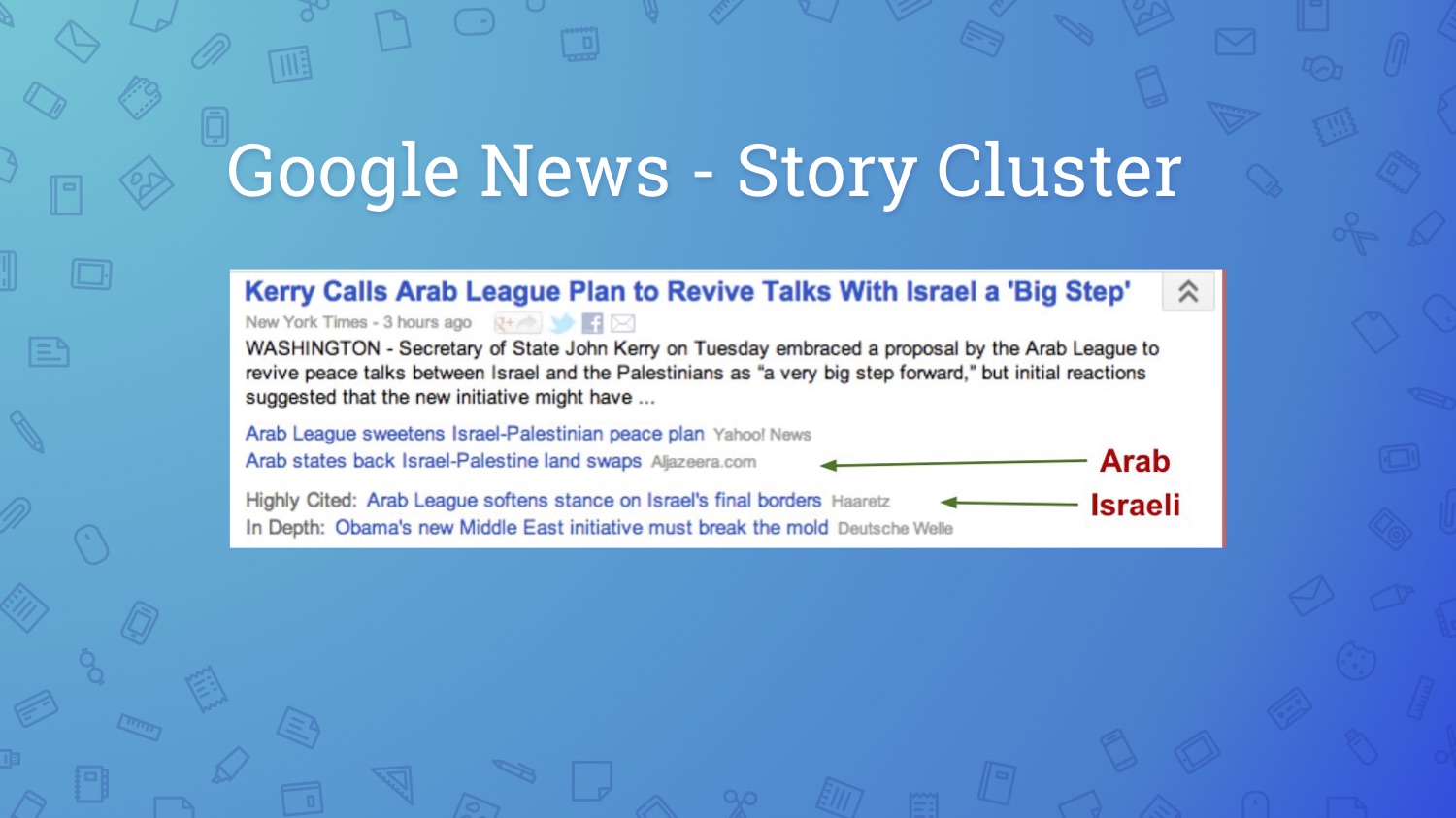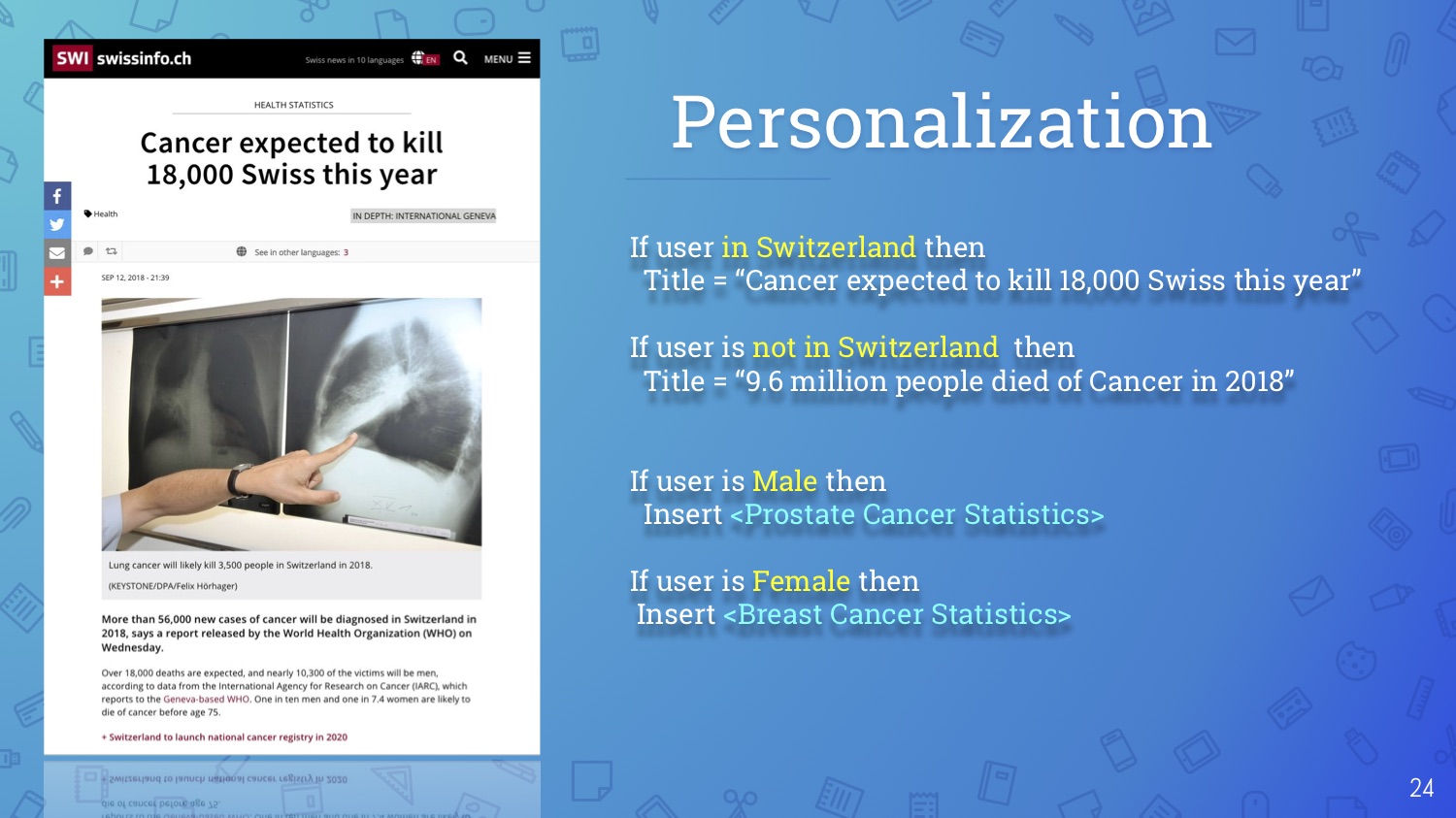
Democracy requires two things, according to Krishna Bharat, founder of Google News: one is free and fair elections and the other is an informed public who understand the issues that are impacting them.
"To do this, they depend on you," he said to an audience of international journalists and editors at the GEN Summit in Athens (15 June 2019).
"You are what provides the public with the information that then allows them to make the right decision about who to elect."
Bharat explained that one of the ways Google News uses artificial intelligence (AI) to help the media in this mission, is bringing news from around the world to a single place where readers can browse multiple perspectives, thus encouraging them to read more broadly.

But a news aggregator can only be as good as the worldwide media which feeds it, so having a healthy media ecosystem is very important.
This is why the publishers need to fight mis- and disinformation. Although falsehoods are inevitable, given the payoffs for those who benefit from misleading the public, there are also efficient ways to fight them.
As an example, Bharat cited the role of WhatsApp in spreading misinformation ahead of the 2019 Indian elections.
He explained that one of the problems is that large parts of India are illiterate while access to high bandwidth has suddenly leapt in the last five years.
"We went from 125 million to 512 million broadband users," he said.
"So people who have never been exposed to the internet are getting broadband for the first time, seeing images, memes, and videos. And our [brain] says seeing is believing."
Ironically, technology is the poison and the cure for misinformation. While it allows people to fabricate and distribute falsehoods to large audiences, it can also help with fact-checking and debunking fake news material.
Real-life identity v. online authenticity
Right now though, newsrooms lack the capacity to do original research in AI. So most of solutions come from technology companies that are not necessarily developing them with journalism in mind.
"One of the best things about the internet is that everybody has a voice. The tragedy of internet is everybody has a voice," joked Bharat, adding that revealing users' identity may solve incivility but can lead to online harassment.
He suggested that verifying whether an individual is a real person is a better way to tackle the problem.
AI can help with authenticating a user by verifying their geographical location, history, social media, online shopping accounts, education, political views, religion, marital status, gender, ethnicity and civility of online interactions.
Bharat suggested these ‘real people’ should be given more space for online interaction and their views should be listened to by the media, as opposed to paying attention to falsehoods spread by robots.
Implementing these measures, however, requires an alliance between technology companies and publishers who need to figure out how to better connect audiences with journalists, using the tools that the tech companies already have.
Detailed personalisation
The same kind of knowledge and collaboration can allow for advanced forms of personalisation. For example, AI can help journalists tailor news to a particular geographical area or gender to make it more relevant to the audience.

Understand the crowd
One of the most exciting AI developments Bharat spoke about are scalable interviews.
"There is a lot of shoddy journalism where people talk to five or 10 people and then produce a piece. But to really understand healthcare, Brexit or Yellow Vests, you have to talk to tens of thousands of people."
Having a human journalists conducting interviews on such scale is not cost effective. AI, however, is able to not only interview thousands of people in a short space of time, but also tailor the conversations so it gets the most out of the interview.
"Getting feedback from a million people may be possible in a cost effective way in a decade from now,” Bharat said.
Reporter’s notebook 2.0
AI can also make a difference in what Bharat called the ‘Reporter's notebook 2.0,’ which would allow journalists, for example, to transcribe interviews instantly. A robot can also take documents using optical character recognition (OCR) and convert them into text. It can tag speakers, translate and provide context. It can recognise names and connect them to other elements already known in your organisation so you can find relationships.
"All of this will be very easy to do in the near-term. Longer term, we can do very powerful things like automatic summarisation to produce different versions of what is being said, so that you can pass it on to other people."
This means the possibility to use robots to find related content or fact-check claims in real time.
"So I imagine a situation in the future where you're interviewing somebody and you're wearing something that is talking to your phone. The AI on your phone is able to 'listen' to the conversation and provide you with inputs in real time. You will know that five years ago, she actually said the opposite, know what she said, and you will be able to ask her the question right away.
"I think journalism is the backbone of democracy. And if you're in the business of helping people build a true and accurate picture of the world they live in, not a distorted one, then you are supporting democracy. Otherwise you're in the entertainment business."
Bharat added that there are many ways in which AI has been a threat to democracy. But it can also be turned around and used to both defend democracy by fighting misinformation and doing an in-depth analysis that allows us to give a true and accurate narrative.
"You should think really hard about what the next decade is going to mean as digital employees come to the newsroom, not to take away jobs from journalists, but to give them superpowers, to be a buddy, to be a resource.
"How are they going to be integrated? How are they going to be trained? Will the large newsrooms have all the benefits and the small newsrooms will fall behind?
"These are huge questions. It's time to start thinking about what exactly it means to bring AI into your newsroom," Bharat concluded.
Free daily newsletter
If you like our news and feature articles, you can sign up to receive our free daily (Mon-Fri) email newsletter (mobile friendly).
Related articles
- Why video journalism is not ready to ditch its editors
- RISJ Digital News Report 2024: Three essential points for your newsroom
- RISJ Digital News Report 2024: Five trends to watch in the UK
- Why TikTok star Sophia Smith Galer created an AI tool to help journalists make viral videos
- Keeping the conversation clean: How AI helps the Financial Times moderate comments









